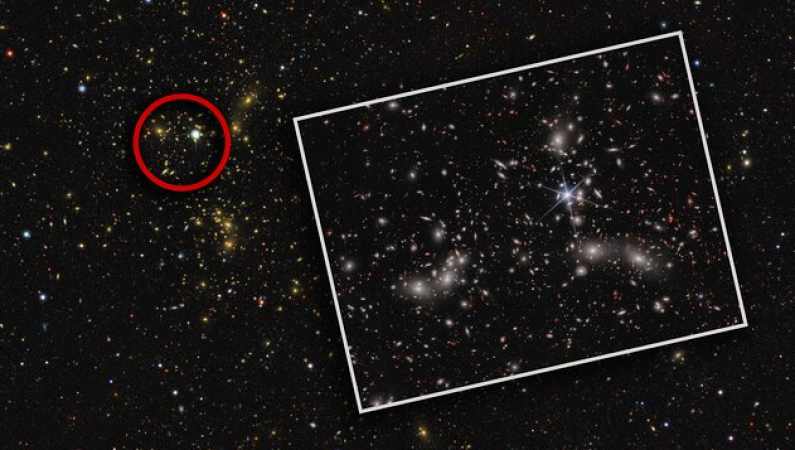
United States: Greek mythology describes how Pandora's promiscuous nature leads her to open a box, from which all the evils and troubles of the world can be removed.
As it focused on a region of space known as the "Pandora Cluster", the James Webb Space Telescope (JWST) observed a phenomenon predicted by Einstein in 1915. Let's hope he didn't.
An even larger "mega cluster" of galaxies was formed from the merger of three massive clusters, as revealed in the new JWST image, which also reveals previously unseen details about the region.
Also Read: Nokia X30 5G debuts with subpar hardware and an extravagant price
Observations of various structures within this region of Pandora's cluster, formally known as Abell 2744, gave rise to its nickname.
However, the Hubble Space Telescope has probed only the central core of this region of space, so many mysteries remained unresolved when the JWST focused its powerful infrared instruments on this region.
As part of the Ultradeep NIRspec and NIRCam observations before the Epoch of Reionization (Uncover (opens in new tab)) project, the JWST team used the Near-Infrared Camera (Opens in new tab) (NIRCam) and the Near-Infrared Spectrograph (NIRCAM). Opens in new tab) (NIRSpec) instrument for studying Pandora's Cluster.
This required four JWST "snapshots", which were then stitched together to form the Deep Field Image. This resulted in a binocular image with an astonishing 50,000 infrared light sources.
This yielded a deep-field image of Pandora's Cluster, located some 3.5 billion light-years away, achieving an impressive balance of width and depth that could revolutionize the study of galactic evolution.
Also Read: Google Photos crashes for some users after the most recent iOS update
The image shows a bright foreground star from the Milky Way with clearly recognizable JWST diffraction spikes. The much more distant galaxies in Pandora's cluster appear as bright sources of white light surrounded by a faint glow.
While general relativity, a theory of gravity first proposed by Albert Einstein in his work in 1915, is key to understanding this group of clusters, astronomers have also come to rely on a natural phenomenon.
According to general relativity, objects with mass will distort the fabric of space. This is the equivalent of pressing things onto a stretched rubber sheet and punching holes in it.
Cosmic objects of enormous mass create large warps in the fabric of space, just as balls of increasing mass create larger, more extreme dents in that sheet. This curvature can be so extreme that it bends light as it travels through it.
This means that the background object may appear to have shifted position in the sky if the light from the object passes through an extremely massive object in the foreground on its way to Earth.
This gravitational lensing may have additional effects. In some cases, a "lensing object" or foreground mass object can actually help amplify the light coming from background objects.
This amplification makes it possible for already powerful JWSTs to see light from distant, so early galaxies that may be too faint to observe without lensing.
Lensing can also distort background objects, stretching them like cosmic taffy as a result of their light taking different paths with different travel times around the lensing object. Using this distortion, astronomers can distinguish between galaxies in the foreground and those in the background.
The area of sky that includes Pandora's cluster in the most recent JWST image serves as an example of this. There are hundreds of distant strongly lensed galaxies visible as light arcs in the lower right corner of the image. Even Hubble had never observed these galaxies before.
The image was made by NIRCam capture of Pandora's cluster during 30 hours of observations and exposures that lasted between 4 and 6 hours.
Also Read: Moon dust is used to create solar cells at Jeff Bezos' Blue Origin company
Now that these observations have been made, the region will be probed using NIRSpec, which will yield precise measurements of distances within the cluster and information about the makeup of its constituent galaxies.
This brand new information, which is set to be made public this summer, should offer an entirely new perspective on how galaxies came to be in the early universe and how they evolved to form the universe we see today.